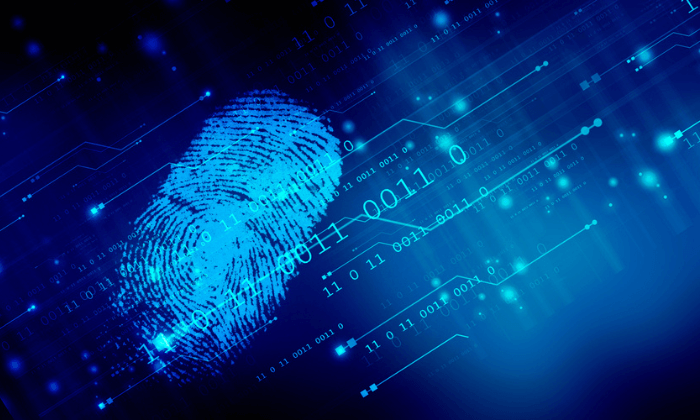If you’re applying for a visa, green card, citizenship, or any adjustment of immigration status in the United States, there’s a good chance you’ll be required to undergo fingerprinting for a background check. In many cases, this is done through LiveScan fingerprinting, a fast and secure way to capture biometric data for identity verification.
Immigration authorities like U.S. Citizenship and Immigration Services (USCIS) use LiveScan to run your fingerprints through federal databases, ensuring you meet the eligibility requirements for your application. It might sound intimidating, but the process is simple if you know what to expect.
In this guide, we’ll break down everything you need to know about LiveScan fingerprinting for immigration—what it is, why it’s required, how it works, and how to prepare for your appointment.
What Is LiveScan Fingerprinting?
LiveScan fingerprinting is a digital method of capturing your fingerprints electronically. Instead of using ink and paper, your fingerprints are scanned and submitted instantly to the FBI or other government agencies for a background check. It’s used across many sectors—like employment, licensing, and yes, immigration—to confirm your identity and check for criminal history or immigration violations.
LiveScan is:
- Fast – submissions are sent electronically
- Secure – encrypted to protect your personal data
- Accurate – technology ensures high-quality image capture
Why Is Fingerprinting Required for Immigration?
Fingerprinting is a key part of the immigration vetting process. The Department of Homeland Security (DHS) and USCIS use it to:
- Confirm your identity
- Check for any criminal history
- Verify you haven’t previously violated immigration laws
- Ensure there are no issues that would make you inadmissible
LiveScan fingerprints are typically required for:
- Green card applications
- Naturalization (citizenship)
- Adjustment of status
- Work permit renewals
- Certain visa applications
- Deferred Action for Childhood Arrivals (DACA)
Step-by-Step: The LiveScan Process for Immigration
Here’s what you can expect from start to finish:
Step 1: Receive Your Biometrics Appointment Notice
Once you’ve filed your immigration application (e.g., Form I-485 for green cards or Form N-400 for citizenship), USCIS will send you a notice for a biometrics appointment, usually via Form I-797C.
This notice will include:
- Date and time of your appointment
- The address of the Application Support Center (ASC)
- Instructions on what to bring
💡 Note: USCIS generally uses their own facilities for immigration biometrics. However, in some cases—especially if you’re applying from out-of-state or through an attorney—you may need LiveScan fingerprinting from a certified provider. If that applies to you, check the instructions carefully or consult with an immigration attorney.
Step 2: Prepare for Your Appointment
Before your appointment, make sure you:
- Bring your appointment letter (Form I-797C)
- Bring a valid government-issued photo ID (passport, driver’s license, state ID, etc.)
- Avoid wearing lotions or oils on your hands (they can interfere with scans)
- Arrive early—late arrivals may need to reschedule
If you’re using a certified LiveScan provider instead of a USCIS ASC (in unique cases), you may also need to bring:
- The correct ORI number or agency code
- Payment for the LiveScan service
- Additional forms, if your attorney or agency requested them
Step 3: Get Fingerprinted and Photographed
At your appointment, the technician will:
- Verify your identity using your ID and appointment letter
- Digitally scan your fingerprints using a LiveScan machine
- Take a digital photo of your face
- Collect your signature to confirm your attendance
The entire process takes about 15–20 minutes and is painless and straightforward.
Step 4: What Happens After
Once your fingerprints are submitted, they are sent to the FBI and DHS databases. The background check will screen for:
- Criminal records
- Immigration violations
- Deportation orders
- Matches with watchlists or fraudulent activity
Your immigration application won’t be processed further until this background check is complete. In most cases, you don’t need to take any further action unless USCIS contacts you with follow-up questions or requests.
Typical processing time for fingerprint checks:
- 24–72 hours, but your case won’t progress until USCIS completes all other reviews.
Can You Be Denied Based on LiveScan Results?
Yes—but not automatically. A criminal record or immigration violation won’t always result in denial. USCIS looks at:
- The type of offense
- How long ago it occurred
- Whether the issue was resolved
- Your overall immigration history
If there’s a problem, you may receive a Request for Evidence (RFE) or be asked to appear for an interview. It’s best to speak with an immigration attorney if you’re concerned about your history.
Final Tips for a Smooth Experience
✅ Keep your appointment letter safe and bring it to your appointment
✅ Bring the correct ID – expired documents can lead to rescheduling
✅ Check your hands – clean and dry fingerprints scan better
✅ Don’t miss your appointment – rescheduling can delay your case
✅ Ask questions – if you’re unsure about your notice or what’s required, call ahead or talk to an expert
Final Thoughts
LiveScan fingerprinting is a critical part of the immigration process—it helps the U.S. government confirm your identity, protect national security, and ensure you meet the legal requirements for the benefit you’re applying for.
While the process might feel a bit intimidating, it’s actually very simple when you’re prepared. Whether you’re going through USCIS directly or using a certified LiveScan provider for remote fingerprinting, staying organized and informed can make all the difference. We recommend newport beach livescan.

